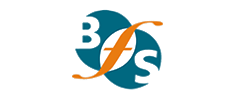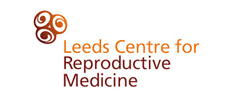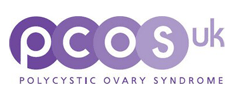The Polycystic Ovary Syndrome: Guidance for Healthcare Professionals

The Polycystic Ovary Syndrome: Guidance for Diagnosis and Management
Adam Balen MD, DSc, FRCOG
Professor of Reproductive Medicine and Surgery
Leeds Teaching Hospitals
Introduction
Polycystic ovary syndrome (PCOS) is the commonest endocrine disturbance affecting women. The PCOS is a heterogeneous condition whose pathophysiology appears to be multifactorial and polygenic. The definition of the syndrome has been much debated. Key features include menstrual cycle disturbance, hyperandrogenism and obesity. There are many extra-ovarian aspects to the pathophysiology of PCOS yet ovarian dysfunction is central (1). An international consensus meeting redefined PCOS as requiring the presence of two out of the following three criteria:
1) A menstrual cycle disturbance (oligomenorrhoea or amenorrhoea);
2) Hyperandrogenism (clinical and/or biochemical);
3) Polycystic ovaries as seen on ultrasound scan,
after appropriate investigations have been performed to exclude other causes of menstrual irregularity or hyperandrogenism (2). The morphology of the polycystic ovary, has been defined as an ovary with 12 or more follicles measuring 2-9 mm in diameter and/or increased ovarian volume (>10 cm3) (3).
There is considerable heterogeneity of symptoms and signs amongst women with PCOS and for an individual these may change over time (4). The PCOS is familial and various aspects of the syndrome may be differentially inherited (5). Polycystic ovaries can exist without clinical signs of the syndrome, which may then become expressed over time – especially for example with a gain in weight.
There are a number of interlinking factors that may affect the expression of PCOS. A gain in weight is associated with a worsening of symptoms whilst weight loss will ameliorate the endocrine and metabolic profile and symptomatology (6). Normal ovarian function relies upon the selection of a follicle, which responds to an appropriate signal (follicle stimulating hormone, FSH) in order to grow, become ‘dominant’ and ovulate. This mechanism is disturbed in women with PCOS, resulting in multiple small cysts (follicles), most of which contain potentially viable oocytes but within dysfunctional follicles.
Elevated serum concentrations of insulin are more common in both lean and obese women with PCOS than weight-matched controls. Indeed it is hyperinsulinaemia that appears to be a key player in the pathogenesis of the syndrome, particularly in those who are overweight, as insulin stimulates androgen secretion by the ovarian stroma and appears to affect the normal development of ovarian follicles, both by the adverse effects of androgens on follicular growth and possibly also by suppressing apoptosis and permitting the survival of follicles otherwise destined to disappear (7). The prevalence of diabetes in obese women with PCOS is at least 11% and so a measurement of impaired glucose tolerance is important and long term screening advisable (8). Insulin resistance correlates both with inter-menstrual interval and with hyperandrogenaemia – in other words the greater the degree of menstrual disturbance or androgen excess the greater the metabolic disturbance.
Exercise and weight loss are the most physiological way to improve insulin sensitivity and improve the metabolic and reproductive abnormalities associated with the syndrome. In women with PCOS it has been demonstrated that even relatively modest weight loss improves the hormonal profile and improvement in the reproductive outcome for all forms of fertility treatment (6). Since the association between insulin resistance and BMI is stronger in obese women with PCOS, than in weight-matched controls, the benefits of weight loss should be even greater in these women than in women without PCOS.
The spectrum of clinical manifestations of the Polycystic Ovary Syndrome
|
Symptoms • Hyperandrogenism (hirsutism, acne, alopecia) • Menstrual disturbance • Infertility • Obesity Possible late sequelae |
|
Serum endocrinology ^ Androgens (testosterone and androstenedione) ^ Luteinising hormone (LH), normal follicle stimulating hormone (FSH) ^ Fasting insulin (not routinely measured; insulin resistance assessed by GTT or HbA1c) v Sex hormone binding globulin (SHBG), results in elevated “free androgen index” ^ or normal oestradiol ^ Prolactin |
Investigations for Polycystic Ovary Syndrome
| Test | Normal range (may vary with local laboratory assays) |
Additional points |
| Pelvic ultrasound | To assess ovarian morphology and endometrial thickness | Transabdominal scan satisfactory in women who are not sexually active. |
| Testosterone (T)
Sex hormone binding globulin (SHBG) |
0.5 – 1.8 nmol/l (on older assays upper limit is 5 nmol/l) 16 – 119 nmol/l |
It is unnecessary to measure other androgens unless total testosterone is > 2.5 nmol/l, in which case referral is indicated. Important to know normal range for assay in your local laboratory. |
| Oestradiol | Measurement is unhelpful to diagnosis | Oestrogenisation may be confirmed by endometrial assessment. |
| Luteinising hormone (LH)
Follicle stimulating hormone (FSH) |
2 – 10 IU/L
2 – 8 IU/L |
FSH and LH best measured during days 1-3 of a menstrual bleed. If oligo-/ amenorrhoeic then random samples are taken. |
| Anti-müllerian hormone (AMH) | Often elevated > 35 pmol/l | May be checked to assess ovarian reserve |
| Prolactin, thyroid function, TSH |
< 500 mU/L 0.5 – 5 IU/L | Measure if oligo-/ amenorrhoeic |
| Fasting insulin (not routinely measured) | < 30 mU/L | Impaired glucose tolerance / insulin resistance assessed by HbA1C or glucose tolerance test (GTT) |
Additional points
Transabdominal scan satisfactory in women who are not sexually active.
It is unnecessary to measure other androgens unless total testosterone is > 2.5 nmol/l, in which case referral is indicated.
Important to know normal range for assay in your local laboratory.
Insulin suppresses SHBG, resulting in a high FAI in the presence of a normal total T
Oestrogenisation may be confirmed by endometrial assessment.
FSH and LH best measured during days 1-3 of a menstrual bleed. If oligo-/ amenorrhoeic then random samples are taken.
May be checked to assess ovarian reserve
Measure if oligo-/ amenorrhoeic
Impaired glucose tolerance / insulin resistance assessed by HbA1C or glucose tolerance test (GTT)
Glucose tolerance
Women who are obese, and also many slim women with PCOS, may have impaired glucose tolerance (IGT) due to insulin resistance and elevated serum concentrations of insulin. A 75 gram oral glucose tolerance test (GTT) may be performed in women with PCOS and a BMI > 30 kg/m2, with an assessment of the fasting and two hour glucose concentration. It has been suggested that South Asian women should have an assessment of glucose tolerance if their BMI is greater than 25 kg/m2 because of the greater risk of insulin resistance at a lower BMI than seen in the Caucasian population.
Definitions of glucose tolerance after a 75 g glucose tolerance test (GTT)
| Diabetes Mellitus | Impaired Glucose Tolerance (IGT) | Impaired Fasting Glycaemia | |
| Fasting glucose (mmol/l) | > 7.0 | < 7.0 | > 6.1 and < 7.0 |
| 2 hour glucose (mmol/l) | > 11.1 | > 7.8 < 11.1 |
< 7.8 |
| Action | Refer Diabetic Clinic | Dietary advice. Check fasting glucose and HbA1C annually. Consider metformin |
Dietary advice. Check fasting glucose and HbA1C annually |
Management of the polycystic ovary syndrome
The clinical management of a women with PCOS should be focused on her individual problems. However, the symptoms typically associated with the condition have also been shown to lead to a significant reduction in health-related quality of life (HRQoL) (9). HRQoL is a multi-dimensional, dynamic concept that encompasses physical, psychological, and social aspects that are associated with a particular disease or its treatment. Therefore management of women with PCOS needs to consider and understand the negative impact this condition may have upon these psycho-social parameters. For example, although the management of hirsutism may be considered as a purely cosmetic issue, excessive facial hair has been shown to be one of the major causes of marked psychological stress in women with PCOS (9). Infertility and weight issues have also been found to affect other social and psychological parameters. Infertility can cause tensions within the family, altered self-perception, and problems at work.
Whilst obesity worsens the symptoms, the metabolic scenario may conspire against weight loss and many women experience frustration in attempts to lose weight and suffer from low-esteem and poor body image. Diet and physical activity are key to symptom control.
There are significant ethnic variations in the degree of insulin resistance (IR) and hence the expression PCOS, with women of Southern Asian origin having a greater degree of IR at a lower BMI than Caucasian European women (10).
Obesity
Obesity worsens both symptomatology and the endocrine profile and so obese women (BMI>30kg/m2) should therefore be encouraged to lose weight. Weight loss improves the endocrine profile, the likelihood of ovulation and a healthy pregnancy. Much has been written about diet and PCOS. The right diet for an individual is one that is practical, sustainable and compatible with her lifestyle. It is sensible to reduce glycaemic load by lowering sugar content in favour of more complex carbohydrates and to avoid fatty foods. Meal replacement therapy or low calorie diets may be appropriate: it is often helpful to refer to a dietitian, if available. An increase in physical activity is essential, preferably as part of the daily routine. 30 minutes per day of brisk exercise is encouraged to maintain health, but to lose weight, or sustain weight loss, 60 to 90 minutes per day is advised. Concurrent behavioural therapy improves the chances of success of any method of weight loss.
Anti-obesity drugs such as Orlistat have limited and short-term benefit. Metformin, of which more below, does not enhance weight reduction in women with PCOS (11). For some it is necessary to consider bariatric surgery (gastric bypass or banding).
Menstrual Irregularity
Patients with PCOS are not oestrogen deficient and those with amenorrhoea are at risk not of osteoporosis but rather of endometrial hyperplasia or adenocarcinoma (due to the unopposed actions of oestrogen in the absence of progesterone that is usually released after ovulation). An ultrasound assessment of endometrial thickness provides a bioassay for oestradiol production by the ovaries and conversion of androgens in the peripheral fat. If the endometrium is thicker than 15mm a withdrawal bleed should be induced and if the endometrium fails to shed then endometrial sampling is required to exclude endometrial hyperplasia or malignancy.
The easiest way to control the menstrual cycle is the use of a low dose combined oral contraceptive preparation. This will result in an artificial cycle and regular shedding of the endometrium. An alternative is a progestogen (such as medroxyprogesterone acetate, Provera) for 12 days every 1-3 months to induce a withdrawal bleed. It is also important once again to encourage weight loss. As women with PCOS are thought to be at increased risk of cardiovascular disease a “lipid friendly” combined contraceptive pill should be used (12). An alternative means of providing endometrial protection is the use of a progestogen secreting Mirena intrauterine system (IUS).
Infertility
Ovulation can be induced with the anti-oestrogens, clomiphene citrate (50-100 mg) or tamoxifen (20-40mg), days 2-6 of a natural or artificially induced bleed. Whilst clomiphene is successful in inducing ovulation in over 80% of women, pregnancy only occurs in about 40%. Clomiphene citrate should only be prescribed in a setting where ultrasound monitoring is available (and performed) in order to minimise the 10% risk of multiple pregnancy and to ensure that ovulation is taking place (13). A daily dose of more than 100 mg rarely confers any benefit. Once an ovulatory dose has been reached, the cumulative conception rate continues to increase for up to ten to twelve cycles (14).
The therapeutic options for patients with anovulatory infertility who are resistant to anti-oestrogens are either parenteral gonadotrophin therapy or laparoscopic ovarian diathermy (14). Because the polycystic ovary is very sensitive to stimulation by exogenous hormones, it is very important to start with very low doses of gonadotrophins and follicular development must be carefully monitored by ultrasound scans. The advent of transvaginal ultrasonography has enabled the multiple pregnancy rate to be reduced to approximately 5% because of its higher resolution and clearer view of the developing follicles. Cumulative conception and live birth rates after 6 months may be 62% and 54%, respectively, and after 12 months 73% and 62%, respectively (14). Close monitoring should enable treatment to be suspended if three or more mature follicles develop, as the risk of multiple pregnancy obviously increases.
Women with PCOS are also at increased risk of developing the ovarian hyperstimulation syndrome (OHSS). This occurs if too many follicles (>10mm) are stimulated and results in abdominal distension, discomfort, nausea, vomiting and sometimes difficulty breathing. The mechanism for OHSS is thought to be secondary to activation of the ovarian renin-angiotensin pathway and excessive secretion of vascular epidermal growth factor (VEGF). The ascites, pleural and pericardial effusions exacerbate this serious condition and the resultant haemoconcentration can lead to thromboembolism. The situation worsens if a pregnancy has resulted from the treatment as hCG from the placenta further stimulates the ovaries. Hospitalisation is sometimes necessary in order for intravenous fluids and heparin to be given to prevent dehydration and thromboembolism. Although the OHSS is rare it is potentially fatal and should be avoidable with appropriate monitoring of gonadotrophin therapy.
Ovarian diathermy is free of the risks of multiple pregnancy and ovarian hyperstimulation and does not require intensive ultrasound monitoring. Laparoscopic ovarian diathermy has taken the place of wedge resection of the ovaries (which resulted in extensive peri-ovarian and tubal adhesions), and it appears to be as effective as routine gonadotrophin therapy in the treatment of clomiphene-insensitive PCOS, although time to pregnancy is a little slower (14).
Hyperandrogenism, Hirsutism and Acne
The bioavailability of testosterone is affected by the serum concentration of sex hormone-binding globulin (SHBG). High levels of insulin lower the production of SHBG and so increase the free fraction of androgens. Elevated serum androgen concentrations stimulate peripheral androgen receptors, resulting in an increase in 5-alpha reductase activity directly increasing the conversion of testosterone to the more potent metabolite, dihydrotestosterone. Symptoms of hyperandrogenism include hirsutism and acne, which are both very distressing conditions. Hirsutism is characterised by terminal hair growth in a male pattern of distribution, including chin, upper lip, chest, upper and lower back, upper and lower abdomen, upper arm, thigh and buttocks. A standardised scoring system, such as the modified Ferriman and Gallwey score should be used to evaluate the degree of hirsutism before and during treatments.
Treatment options include cosmetic and medical therapies. As drug therapies may take six to nine months or longer before any improvement of hirsutism is perceived physical treatments including electrolysis, waxing and bleaching may be helpful whilst waiting for medical treatments to work. For many years the most ‘permanent’ physical treatment for unwanted hair has been electrolysis. It is time-consuming, painful and expensive and should be performed by an expert practitioner. Regrowth is not uncommon and there is no really permanent cosmetic treatment but the last few years have seen much development in the use of laser and photothermolysis techniques. There are many different types of laser in production and each requires evaluation of dose intensity, effectiveness and safety. The technique is promising, being faster and more effective than shaving, waxing or chemical depilation. Repeated treatments are required for a near permanent effect because only hair follicles in the growing phase are obliterated at each treatment. Hair growth occurs in three cycles so six to nine months of regular treatments are typical. Patients should be appropriately selected (dark hair on fair skin is best), and warned that complete hair removal cannot be guaranteed and some scarring may occur. At present it is not widely available and is still an expensive option.
Eflornithine (Vaniqa) has been recently developed as a topical treatment for hirsutism. It works by inhibiting the enzyme ornithine decarboxylase in hair follicles and may be a useful therapy for those who wish to avoid hormonal treatments but may also be used in conjunction with hormonal therapy. Vaniqa may cause some thinning of the skin and so high factor sun block is recommended in the summer.
Medical regimens should stop further progression of hirsutism and decrease the rate of hair growth. Therapy for acne should aim to lower sebum excretion, alter follicular cell desquamation, reduce propionibacteria and reduce inflammation. When using anti-androgen therapy, adequate contraception is important in women of reproductive age as transplacental passage of anti-androgens may disturb the genital development of a male fetus (12).
The best pharmacological treatment of proven effectiveness is a combination of the synthetic progestogen cyproterone acetate, which is anti-gonadotrophic and anti-androgenic, with ethinyl oestradiol. Dianette contains ethinyloestradiol (35mcg) in combination with cyproterone (2mg). Dianette is licenced for moderate to severe hirsutism and severe acne. The antiandrogen effect reduces sebum excretion in 2-3 months and results in clinical improvement in acne in 4-6 months (12).
Oestrogens lower circulating androgens by a combination of a slight inhibition of gonadotrophin secretion and by an increase in hepatic production of sex hormone binding globulin (SHBG) resulting in lower free testosterone. Cyproterone acetate can rarely cause liver damage and liver function should be checked regularly (after 6 months and then annually). There was thought to be an increased risk of thrombo-embolism and so once symptom control has been achieved and sustained over 3-4 months, it has been recommended to switch to a lower dose COCP. The data overall, however, is reassuring and if a patient prefers to remain on Dianette she may do so long term with appropriate monitoring (12).
Spironolactone is a weak diuretic with anti-androgenic properties and may be used in women with either hirsutism and/or acne in whom the COCP is contra-indicated at a daily dose of 25 – 100 mg. Drosperinone is a derivative of spironolactone and contained in the COCP, Yasmin, which also appears affective for women with PCOS. Again there have been concerns about thromboembolic risk in the newer COCPs and so care should be taken in their prescription. Other anti-androgens such as ketoconazole, finasteride and flutamide have been tried, but are not widely used in the U.K. for the treatment of hirsutism in women due to their adverse side effects (in particular flutamide has been associated with fatal hepatotoxicity). Furthermore they are no more effective than cyproterone acetate (12).
Topical anti-acne agents can be safely and successfully combined with systemic anti-androgen therapy in an attempt to target as many aetiological factors as possible. However, these topical treatments alone have little effect on sebum production so are not generally successful when utilised alone in acne associated with PCOS. Topical retinoids impact on the microcomedo which is the precursor to non-inflammatory and inflammatory acne lesions. They also have direct comedolytic and anti-inflammatory activity. These agents are useful adjuvant therapies in combination with anti-androgen treatments and can be used as maintenance treatment after discontinuation of systemic therapy. Topical antimicrobials (benzoyl peroxide / antibiotics) have good anti-inflammatory activity and should help to reduce inflammatory lesions when used alongside anti-androgen treatment.
Oral isotretinoin, a hospital only prescribed medication, is the single systemic therapy that targets the four main aetiological factors implicated in acne. However, it is currently only licensed for severe acne not responding to alternative therapies. A European Directive concerning isotretinoin has enforced a strict Pregnancy Prevention Programme due to the high risk of teratogenecity with this drug. COCPs can be used safely alongside oral isotretinoin and are recommended by the European Directive. Although clinical clearance of acne lesions with oral isotretinoin is very likely, relapse rates post therapy are higher than average when acne is associated with PCOS.
Insulin sensitising agents and metformin
A number of pharmacological agents have been used to amplify the physiological effect of weight loss, notably metformin. This biguanide inhibits the production of hepatic glucose and enhances the sensitivity of peripheral tissue to insulin, thereby decreasing insulin secretion. It was suggested from some initial small studies that metformin may ameliorate hyperandrogenism in women with PCOS and restore menstrual cyclicity in some cases, although subsequent RCTs have failed to show a significant benefit. There has been much publicity about the use of metformin. Metformin does not appear induce weight loss, although coincident weight loss will of course provide additional benefit. Indeed in Leeds we have performed the largest RCT to look at metformin versus placebo and found no benefit from metformin over 6 months with regard to either menstrual control or other symptoms (15). Those who improved were women who lost weight whether on metformin or placebo. Large RCTs and our Cochrane meta-analysis have also demonstrated no benefit from metformin when combined with clomiphene citrate (11). Therefore metformin does not appear to hold the promise that was initially presumed. We therefore only advise metformin therapy in women with impaired glucose tolerance or type 2 diabetes.
Key Points
• PCOS is the commonest endocrine disorder in women (prevalence 15-20%).
• PCOS is a heterogeneous condition, which often runs in families. Diagnosis is made by the ultrasound detection of polycystic ovaries or one or more of a combination of symptoms and signs (hyperandrogenism [acne, hirsutism, alopecia], menstrual cycle disturbance [oligo/ amenorrhoea]) and biochemical abnormalities (hyper secretion of testosterone); and whilst not required for the diagnosis there may be additional elevation of luteinizing hormone and impaired glucose tolerance.
• There are long term risks of developing diabetes and possibly cardiovascular disease, particularly in those who are overweight.
• Therapy to date has been symptom orientated but by our improved understanding of the pathogenesis treatment options are becoming available that strike more at the heart of the syndrome.
• If obese, weight loss should be encouraged to improve symptoms, reproductive function and long term health. A glucose tolerance test should be performed if the BMI is > 30 kg/m2 (or > 25 kg/m2 if from South Asia).
• Menstrual cycle control is achieved by cyclical oral contraceptives, progestogens or a Mirena intrauterine system can be used to protect the endometrium.
• Ovulation induction may be difficult and require progression through various treatments which should be monitored carefully to prevent multiple pregnancy.
• Hyperandrogenism is usually managed with the COCPs Dianette or Yasmin. Alternatives include spironolactone. Flutamide and finasteride are not routinely prescribed because of potential adverse effects. Reliable contraception is required with anti-androgen therapy.
• Insulin sensitizing agents (e.g. metformin) appear to be of limited, if any, benefit.
Indications for referral to specialist clinic
• Very high serum testosterone > 2 nmol/l (to exclude other causes of androgen excess, e.g. tumours, late onset congenital adrenal hyperplasia, Cushings syndrome)
• Rapid onset hirsutism (to exclude androgen secreting tumours)
• Glucose intolerance / diabetes
• Infertility
• Amenorrhoea of more than 6 months – for pelvic ultrasound scan to exclude endometrial hyperplasia
• Refractory symptoms
Further Reading
Current Management of Polycystic Ovary Syndrome. Edited by Adam Balen, Steve Franks, Roy Homburg and Sean Kehoe. Proceedings of 59th RCOG Study Group, RCOG Press, London 2010.
References
1. Balen AH. The pathogenesis of polycystic ovary syndrome: the enigma unravels. Lancet 1999; 354: 966-7.
2. The Rotterdam ESHRE/ASRM-sponsored PCOS consensus workshop group. Revised 2003 consensus on diagnostic criteria and long-term health risks related to polycystic ovary syndrome (PCOS). Authors: Fauser B, Tarlatzis B, Chang J, Azziz R, Legro R, Dewailly D, Franks S, Balen AH, Bouchard P, Dahlgren E, Devoto, Diamanti E, Dunaif A, Filicori M, Homburg R, Ibanez L, Laven J, Magoffin D, Nestler J, Norman R, Pasquali R, Pugeat M, Strauss J, Tan SL, Taylor A, Wild R, Wild S. Human Reproduction 2004; 19: 41-47.
3. Balen AH, Laven JSE, Tan SL, Dewailly D. Ultrasound Assessment of the Polycystic Ovary: International Consensus Definitions. Human Reproduction Update 2003; 9: 505-514.
4. Balen AH, Conway GS, Kaltsas G, Techatraisak K, Manning PJ, West C, Jacobs HS. Polycystic ovary syndrome: The spectrum of the disorder in 1741 patients. Human Reprod 1995; 10:2705-2712
5. Kosova G, Urbanek M. Genetics of the polycystic ovary syndrome. Molecular and Cellular Endocrinology, 2013; 373: 29-38.
6. Clark AM, Ledger W, Galletly C, Tomlinson L, Blaney F, Wang X, and Norman RJ: Weight loss results in significant improvement in pregnancy and ovulation rates in anovulatory obese women. Human Reprod 1995; 10: 2705-2712
7. Dunaif A. Insulin resistance and the polycystic ovary syndrome: mechanisms and implication for pathogenesis. Endocrine Review 1997; 18: 774-800.
8. Bates GW, Legro RS. Longterm management of polycystic ovary syndrome. Molecular and Cellular Endocrinology, 2013; 373: 91-97.
9. Jones GL, Hall JM, Balen AH, Ledger W. Health-related quality of life measurement in women with polycystic ovary syndrome: a systematic review. Human Reproduction Update 2008; 14: 15-25.
10. Wijeyeratne C, Udayangani D, Balen AH. Ethnic specific PCOS. Expert Review of Endocrinology and Metabolism 2013; 8: 71-79.
11. Tang T, Lord JM, Norman RJ, Yasmin E, Balen AH. Insulin-sensitising drugs (metformin, rosiglitazone, pioglitazone, Dchiro-inositol) for women with polycystic ovary syndrome, oligo amenorrhoea and subfertility. Cochrane Database of Systematic Reviews 2012, Issue 5. Art. No.: CD003053. DOI: 10.1002/14651858.CD003053.pub5.
12. Fauser BCJM, Tarlatzis BC, Rerbar RW, Legro RS, Balen AH, Lobo R, Carmina E, Chang J, Yildiz B, Laven JSE, Boivin J, Petraglia F, Wijeyaratne C, Norman RJ, Dunaif A, Franks S, Wild RA, Dumesic D, Barnhart K. Consensus on women’s health aspects of polycystic ovary syndrome (PCOS): the Amsterdam ESHRE/ASRM-Sponsored 3rd PCOS Consensus Workshop Group. Human Reproduction 2012; 27: 14-24.
13. Tarlatzis B, Fauser B.C.J.M., Chang J., Franks S., Legro R., Rebar R.W., Azziz R., Balen A.H., et al.,. Consensus on infertility treatment related to polycystic ovary syndrome. Human Reproduction 2008; 23: 462-477.
14. Balen AH. Ovulation induction in the management of anovulatory polycystic ovary syndrome. Molecular and Cellular Endocrinology, 2013; 373: 77-82.
15. Tang T, Glanville J, Barthh J, Hayden c, Balen AH. Combined lifestyle modification and metformin in obese patients with polycystic ovary syndrome. A randomised, placebo-controlled, double-blind multicentre study. Hum Reprod 2006; 21: 80–89
April 2015










